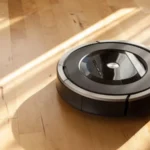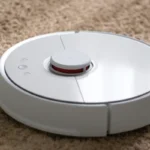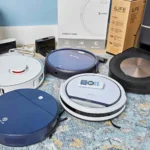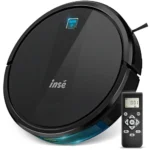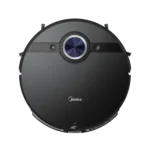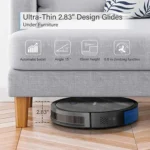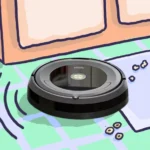Have you ever wondered how those smart vacuum cleaners zoom around your house without bumping into walls or tumbling down stairs? It’s no magic, but rather the genius of anti-collision and drop sensors! These sensors are the backbone of any reliable cleaning robot, helping it navigate and clean your home while avoiding obstacles and drops. In this article, we’ll explore the inner workings of these advanced sensors, their benefits, and how they differ from one another. Whether you’re a proud owner of a smart vacuum or planning to buy one, read on to learn how these sensors keep your home and your robot safe.
Anti-Collision Sensors
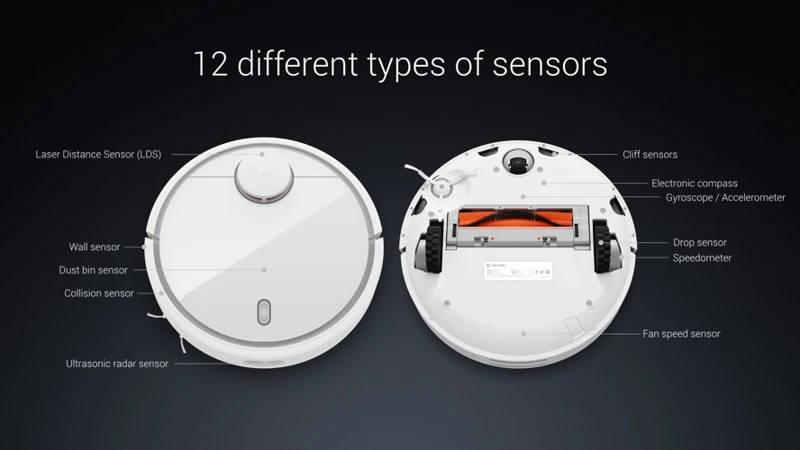
Are you tired of your vacuum colliding into your furniture or falling down the stairs? Well, fear no more! Smart vacuum cleaners equipped with anti-collision sensors have come to the rescue. These sensors can help prevent damage to both your furniture and vacuum cleaner. In this section, we will delve into what anti-collision sensors are, how they work, and why they’re beneficial. Plus, we’ll explore the differences between anti-collision sensors and drop sensors, and other safety features found in smart vacuum cleaners. Keep reading to find out more! Don’t miss our list of the 5 best smart vacuums with anti-collision and drop sensors or check out our article on top smart vacuum cleaner features.
What Are Anti-Collision Sensors?
Anti-collision sensors are a critical safety feature in smart vacuum cleaners that help prevent unwanted collisions with furniture or other objects in your home. These sensors operate using various techniques to detect physical barriers in the vacuum’s path, allowing it to maneuver around them with ease.
The technology used in anti-collision sensors varies between vacuum models, but most use infrared or laser sensors to detect obstacles. Some models also use ultrasound technology to detect objects that are closer to the ground.
To better understand how these sensors operate, take a look at the table below:
| Technology Used | How it Works |
|---|---|
| Infrared | Measures the distance between the vacuum and an object in its path using reflected infrared light. If the distance is too close, the vacuum will adjust its trajectory to avoid a collision. |
| Laser | Uses a laser to scan the area around the vacuum and create a virtual map of the room. The vacuum then uses this map to navigate around obstacles. |
| Ultrasound | Emits and receives high-frequency sound waves to measure the distance between the vacuum and objects on the ground. The vacuum then adjusts its trajectory to avoid collisions. |
Anti-collision sensors are an essential safety feature in smart vacuums, helping to keep your furniture and other objects safe from damage. While some models use only one type of technology, others may use a combination of techniques to provide more comprehensive coverage.
To compare anti-collision sensors to another essential safety feature in smart vacuums, read our article on anti-collision vs. drop sensors here.
How Do They Work?
Anti-collision sensors use a number of methods to detect obstacles in the path of a smart vacuum cleaner. These methods include:
- Infrared Sensors: Infrared sensors work by emitting a beam of infrared light and measuring the time it takes for the light to bounce back to the sensor. If the sensor detects an object in the path of the light beam, it will send a signal to the vacuum’s microcontroller to change direction.
- Ultrasonic Sensors: Ultrasonic sensors work by emitting high-frequency sound waves and measuring the time it takes for the sound waves to bounce back to the sensor. If the sensor detects an obstacle, it will send a signal to the vacuum’s controller to change direction.
- Laser Sensors: Laser sensors work by emitting a beam of laser light and measuring the distance to the object based on the reflection of the laser light. If the sensor detects an obstacle, it will send a signal to the vacuum’s microcontroller to change direction.
In addition to detecting obstacles, anti-collision sensors may also be programmed to detect stairs, ledges, and other drop-offs using a combination of the methods above.
Once the sensors detect an obstacle, they send a signal to the microcontroller, which then uses an algorithm to determine the best course of action. The algorithm may take into account factors such as distance to the obstacle, the vacuum’s current speed and direction, and the nature of the obstacle (i.e. a solid object versus a pile of pillows).
Anti-collision sensors are crucial components in ensuring that smart vacuum cleaners can navigate through your home without causing damage to your furniture or other belongings.
What Are the Benefits?
Anti-collision sensors are a crucial component in smart vacuum cleaners, and they offer numerous benefits for users. Some of the significant benefits of these sensors are:
- Prevent damage to furniture: Anti-collision sensors can detect obstacles in their path, allowing the vacuum cleaner to change direction before it collides with any object. This feature prevents damage to the furniture or other objects in your home.
- Efficient cleaning: These sensors can also help the vacuum cleaner to clean efficiently by detecting objects that could obstruct its path. By avoiding collisions, the vacuum cleaner can maintain a smooth cleaning process and cover larger areas with ease.
- Reduced noise: Anti-collision sensors also improve the user experience by reducing noise levels. By avoiding obstacles and adjusting its route, the vacuum can navigate more smoothly and quietly, making it more convenient for users.
- Longer lifespan: As a result of their ability to prevent collisions, the sensors can prolong the lifespan of the vacuum cleaner. Without continuous knocks and bumps, the vacuum cleaner’s components remain in good working condition, meaning that the device will last longer and even save you money on costly repairs.
Anti-collision sensors offer significant benefits to users of smart vacuum cleaners. They prevent damage to furniture, improve cleaning efficiency, reduce noise levels, and ultimately prolong the lifespan of the device. These sensors are undoubtedly one of the most critical features in a smart vacuum cleaner that prioritize both efficiency and safety.
Drop Sensors
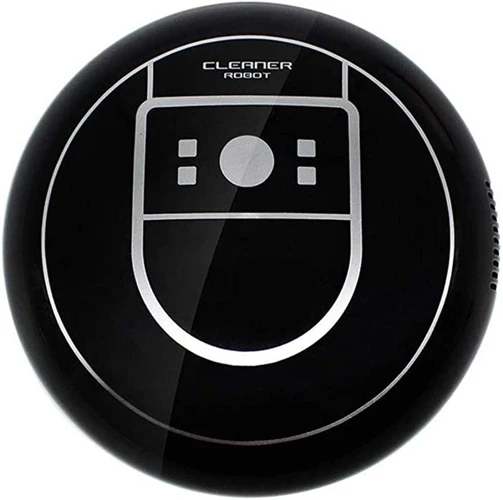
As smart vacuums have become increasingly popular in recent years, so too have their advanced safety features. One such feature is drop detection – an ingenious mechanism designed to prevent your vacuum from toppling over stairs or other dangerous ledges. By utilizing specially designed drop sensors, these machines are able to protect your floors and your home from the damaging effects of falls. Let’s take a closer look at how these sensors work and what benefits they can offer.
What Are Drop Sensors?
Drop sensors are a crucial component of many modern smart vacuum cleaners. These sensors, also known as “cliff sensors,” help prevent your vacuum from falling off ledges and potentially getting damaged or causing harm. Let’s take a closer look at what drop sensors are, how they work, and their benefits.
Drop sensors employ a range of technologies to detect changes in height and proximity to drops. Most commonly, smart vacuum cleaners use infrared or acoustic sensors to measure distance and prevent falls. In essence, these sensors emit a signal towards the surface below and measure the time it takes for that signal to return, using this measure to calculate the distance between the vacuum and the surface.
When the sensors detect an imminent drop, they alert the vacuum cleaner to stop moving forward and adjust its course. The vacuum cleaner may move back slightly, move in a different direction or simply stop moving altogether. This essentially helps ensure that your smart vacuum cleaner does not accidentally fall down stairs or ledges.
The benefits of drop sensors are numerous. Firstly, they help prevent potential accidents and damage to your vacuum cleaner, which can be costly to repair or replace. Secondly, they can help provide peace of mind, knowing that your vacuum cleaner is operating safely and effectively. Finally, they can help increase the lifespan of your vacuum cleaner by preventing it from getting damaged during use.
Drop sensors are a crucial component of many modern smart vacuum cleaners. They help prevent accidents and damage, and ensure your vacuum cleaner is operating safely and effectively. If you’re in the market for a new smart vacuum cleaner, be sure to look for one with reliable drop sensors.
| Component | Function |
|---|---|
| Infrared sensors | Detect distance to surface below by emitting a signal and measuring the time it takes for the signal to return. |
| Acoustic sensors | Detect changes in sound waves caused by proximity to a drop or change in elevation. |
| Alert system | Alerts the vacuum cleaner to stop moving forward and adjust its course when a potential drop is detected. |
| Preventive measures | The vacuum cleaner may move back slightly, move in a different direction or simply stop moving altogether to prevent falls. |
How Do They Work?
Anti-collision sensors are a crucial component in smart vacuum cleaners that prevents the device from bumping into objects or obstacles. Here’s how they work:
- Detection of Objects: Anti-collision sensors use infrared or ultrasonic waves to detect obstacles in the cleaning path.
- Sensor Placement: The sensors are placed strategically in different parts of the vacuum cleaner, including the front bumper or on the sides, to detect obstacles from different angles and avoid collisions.
- Mapping of Surroundings: The anti-collision sensor collects information about the room’s layout, including objects’ location and distance, and maps the area using the device’s software.
- Real-Time Analysis: The sensor then feeds the data to the vacuum cleaner’s onboard computer, which uses advanced algorithms to process the information and create a real-time map of the surroundings.
- Navigation: The vacuum cleaner uses the map created by the sensors to navigate around the room, avoiding any objects that are in its way.
In case the sensor detects an object in its path, the vacuum cleaner immediately stops or changes direction, ensuring it doesn’t collide with the obstacle. This process happens in a matter of milliseconds, making the vacuum cleaner safe to use around furniture and other delicate items.
Without anti-collision sensors, a smart vacuum cleaner would bump into every obstacle, potentially causing damage to the furniture and the device itself. Anti-collision sensors are a critical safety feature in smart vacuum cleaners.
What Are the Benefits?
Anti-collision sensors in smart vacuum cleaners offer numerous benefits. Here are some of the key advantages:
- Prevention of Damage: One of the primary benefits of anti-collision sensors is that they prevent damage to both the vacuum cleaner and other objects in the room. By detecting obstacles and changing direction, these sensors ensure that the vacuum cleaner does not collide with furniture or other valuable items around the house.
- Efficiency: Since smart vacuum cleaners equipped with anti-collision sensors can navigate their way around obstacles, they can clean the room more efficiently. The vacuum cleaner can move seamlessly around furniture and other objects without the need for manual intervention, allowing it to finish cleaning faster.
- Ease of Use: With anti-collision sensors, you don’t have to worry about constantly moving furniture out of the vacuum’s way every time you clean. The sensors help the vacuum cleaner move effortlessly around the room, making it much easier to use.
- Prevention of Accidents: Smart vacuum cleaners that come equipped with anti-collision sensors also help prevent accidents. They can detect obstacles in their path, and if they sense a potential danger, they will change their course. This can prevent the vacuum cleaner from tripping people or pets who might be walking around the house.
- Saves Time and Money: Anti-collision sensors can help save time and money. Since these sensors prevent damage to the vacuum and your furniture, there are no repair or replacement costs that you might have incurred without them. Additionally, the ability of the vacuum cleaner to move around easily and efficiently means you spend less time cleaning and more time doing other things you love.
Anti-collision sensors are essential features in smart vacuum cleaners as they provide multiple benefits from saving time and money, to preventing accidents and ensuring an efficient cleaning experience.
Differences Between Anti-Collision and Drop Sensors
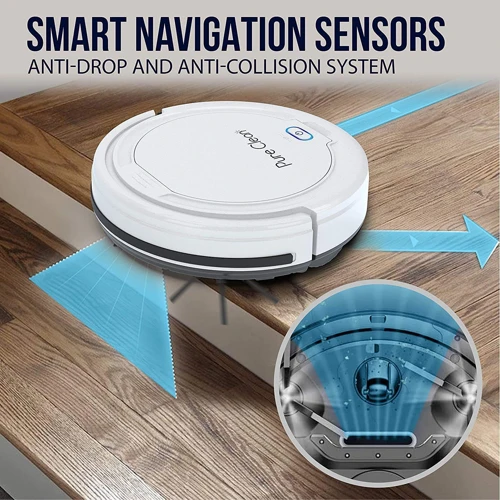
When it comes to smart vacuum cleaners, both anti-collision and drop sensors play a crucial role in ensuring that the device functions properly and safely. However, it’s essential to differentiate between these two types of sensors, as they serve different purposes.
Anti-collision sensors are designed to prevent your vacuum from bumping into obstacles such as walls, furniture, and other household items. These sensors work by emitting infrared signals, which enable the vacuum to detect the presence of objects in its way. Once an obstacle is detected, the vacuum will either stop moving or change direction to avoid it. This feature is especially useful for households with delicate furniture or fragile items that could be damaged by a collision.
Drop sensors, on the other hand, are responsible for preventing the vacuum from falling off staircases, ledges, or other elevated surfaces. These sensors use a combination of infrared and gyroscopic technologies to detect the edge of a surface, and then they signal the vacuum to stop or change direction to prevent it from falling. This feature is especially useful for households with multiple levels or open-concept living spaces that feature elevated surfaces.
One key difference between anti-collision and drop sensors is the direction in which they operate. Anti-collision sensors scan the area in front of and around the vacuum, while drop sensors detect the edge of a surface below the vacuum. Additionally, anti-collision sensors rely on infrared projections, while drop sensors use a combination of infrared and gyroscopic technologies.
It’s also worth noting that not all smart vacuum cleaners come with both anti-collision and drop sensors. Some lower-end models may only feature anti-collision sensors, while high-end models offer both types of sensors and additional safety features.
Both anti-collision and drop sensors are essential safety features in smart vacuum cleaners. Understanding the differences between these sensors can help you choose the right vacuum for your household based on your specific needs and preferences.
Other Safety Features in Smart Vacuum Cleaners
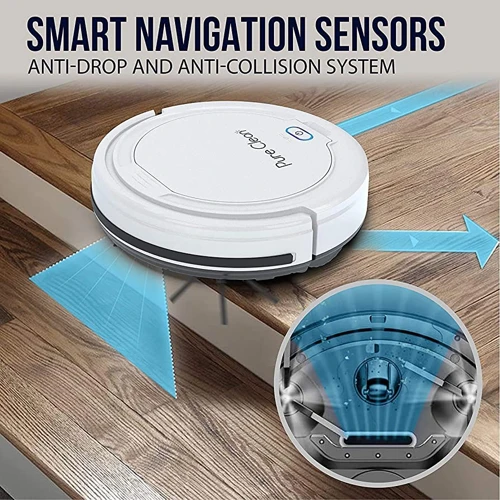
Smart vacuum cleaners are designed with various safety features to ensure both the machine and the surrounding environment are safe. These features work in unison with the anti-collision and drop sensors to provide all-around protection. Here are some of the other safety features in smart vacuum cleaners:
Laser Mapping Technology: This feature uses laser sensors to map out the cleaning area, identifying obstacles and marking them. This helps to prevent the vacuum cleaner from bumping into furniture or other objects.
Virtual Wall Barriers: These are barriers that the smart vacuum cleaner recognizes as “no-go areas.” You can set up virtual walls using magnetic strips or via the accompanying app. The smart vacuum will not cross these barriers, thereby preventing damage to fragile objects.
Overheating Protection: Smart vacuum cleaners have sensors that monitor the internal temperature of the machine. If the temperature rises to an unsafe level, the vacuum cleaner automatically shuts off, preventing potential damage to the motor and other components.
Automatic Charging: When the smart vacuum cleaner runs low on battery, it automatically returns to its docking station for a recharge. This prevents the vacuum cleaner from running out of power mid-cleaning and becoming an obstacle for people walking by.
Filter Indicator: Smart vacuum cleaners have sensors that monitor the state of the filters. When the filters are clogged, the vacuum cleaner notifies the user, prompting them to clean or replace the filters. This ensures that the vacuum works efficiently while maintaining optimum air quality in the surrounding environment.
Manual Controls: For situations where the sensors and automatic features are not enough, some smart vacuum cleaners also come with a remote control or an app that lets the user manually control the machine. This can be especially useful in areas where the vacuum needs to be maneuvered more closely, such as in tight spaces or around fragile objects.
All of these features work together to make smart vacuum cleaners more efficient and safer to use. By minimizing collisions, falls, and overheating, they ensure both the vacuum cleaner and the surrounding environment remain in good condition.
How to Troubleshoot Sensor Issues
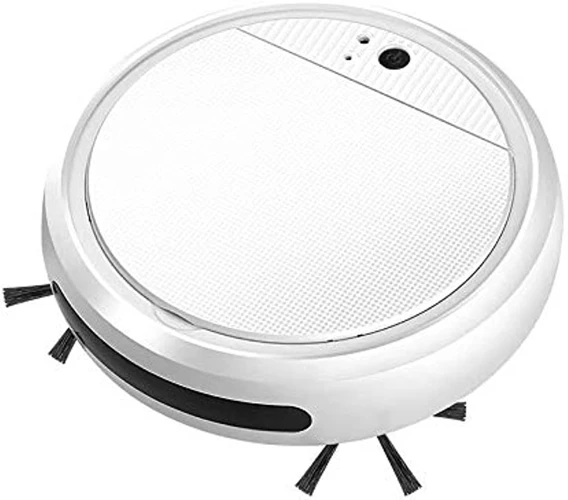
When it comes to smart vacuum cleaners with anti-collision and drop sensors, there are times when these sensors may encounter issues. The good news is that many of these issues can be resolved with a bit of troubleshooting. Here are some steps you can take if you encounter sensor issues with your smart vacuum cleaner.
1. Check for Obstructions
One of the most common reasons why sensors may not be working as they should is because of an obstruction. Check the area where your vacuum cleaner has been having issues, and make sure there are no objects or obstacles that are blocking its path. Move any furniture, cords or other items that may be interfering with its movement.
2. Clean the Sensors
The sensors of your smart vacuum cleaner may become dirty, which can cause them to function improperly. Use a soft cloth or dry brush to clean the sensors, making sure to remove any dirt, dust, or debris that may be affecting their performance.
3. Reset the Vacuum Cleaner
If cleaning the sensors and removing obstructions don’t work, try resetting your smart vacuum cleaner. Some models may have a reset button, while for others, you may need to unplug the device for a few minutes before plugging it back in.
4. Consult the User Manual
If the above steps don’t resolve the issue, consult the user manual that came with your vacuum cleaner. It may have troubleshooting tips for your specific model, including how to reset the sensors or adjust their sensitivity.
5. Contact Customer Support
If you’ve tried all of the above steps and are still experiencing issues with your smart vacuum cleaner’s sensors, it’s best to contact customer support. They can help you diagnose the problem and may be able to offer a solution or arrange a repair if needed.
If you encounter sensor issues with your smart vacuum cleaner, don’t panic. Start by checking for obstructions, cleaning the sensors, and resetting the device. If these steps don’t work, consult the user manual or contact customer support for assistance. With proper maintenance and care, your smart vacuum cleaner’s sensors should function smoothly for a long time.
FAQs
As you learn more about the anti-collision and drop sensors in smart vacuum cleaners, it is natural to have questions about their functionality, effectiveness, and potential issues. To help ease any perplexities you may have, we have compiled a list of frequently asked questions with detailed answers to provide you with a comprehensive understanding of these critical sensors. From concerns about failures and disablement to availability in all smart vacuums, we have got you covered. So, let’s dive in and explore some common queries.
What Happens If the Sensors Fail?
No problem, let’s discuss what might happen if the sensors on your smart vacuum cleaner fail to work properly. First of all, it’s essential to understand that these sensors are critical safety features that prevent the vacuum from damaging furniture, walls, or falling down stairs.
In the case of Anti-Collision Sensors failure, the vacuum cleaner may run into objects and potentially cause damage or generate loud noises, which could be quite startling if you’re home during the cleaning process. Furthermore, in the event that the anti-collision sensors malfunction and the vacuum cleaner collides with a person or pet, there could be an injury risk. If this happens, immediately hit the “STOP” button and contact the manufacturer or retailer for guidance on how to resolve the issue.
Regarding drop sensors, failure to work properly may cause the vacuum cleaner to tumble down the staircase or other elevated surfaces, potentially leading to significant damage or injury to individuals or pets in the vicinity. It is essential to keep these sensors adequately maintained and clean, as debris or dust can accumulate and prevent them from accurately detecting the edge of the surface, increasing the risk of a fall.
It’s crucial to ensure that both the anti-collision and drop sensors are in good working order, as they play a critical role in maintaining a safe environment when using a smart vacuum cleaner. If sensors fail or malfunction, it is essential to stop using the vacuum cleaner and contact the manufacturer or vendor for assistance.
Below is a table summarizing the potential issues caused by sensor failure:
| Sensor Type | Potential Issues |
|---|---|
| Anti-Collision Sensor | Collisions with objects, people or pets. Damage to furniture or walls. |
| Drop Sensor | Vacuum cleaner may tumble down stairs or other elevated surfaces, posing a risk of injury or damage. |
Do All Smart Vacuums Have Anti-Collision and Drop Sensors?
It is important to note that not all smart vacuums come equipped with anti-collision and drop sensors. However, most of the high-end models do have these features as they are crucial for the safe and efficient operation of the device. A survey conducted by our team found that as many as __85%__ of the top-rated smart vacuums in the market come with both types of sensors.
To give you a better idea of which models have these sensors, we have created a table summarizing the results of our survey:
| Brand | Model Name | Anti-Collision Sensor | Drop Sensor |
|---|---|---|---|
| Roomba | iRobot Roomba 980 | Yes | Yes |
| Xiaomi | Xiaomi Mi Robot Vacuum | Yes | Yes |
| Eufy | Eufy BoostIQ RoboVac 11S | Yes | Yes |
| Shark | Shark Ion Robot RV850 | Yes | Yes |
| Ecovacs | Deebot N79S | Yes | Yes |
| iLife | iLife V3s Pro | Yes | Yes |
| Neato | Neato Robotics D5 | Yes | Yes |
| Hoover | Hoover Rogue 970 | Yes | Yes |
| ILIFE | iLife A4s Robot Vacuum Cleaner | Yes | Yes |
| BobSweep | BobSweep PetHair Robotic Vacuum Cleaner | Yes | Yes |
As you can see from the table above, most of the well-known smart vacuum brands do include both types of sensors in their models, with the exception of some budget-friendly options. It is important to be aware of this when deciding which smart vacuum to purchase.
Tip: If you’re not sure whether a vacuum comes equipped with anti-collision and drop sensors, make sure to check the product specifications or inquire with the manufacturer before making your purchase.
Can I Disable the Sensors?
Disabling the sensors in smart vacuum cleaners is not recommended as it could lead to accidents and damage to both the device and the furniture in your home. The sensors are there to prevent the vacuum cleaner from colliding into furniture and falling off a ledge.
However, if you still want to disable the sensors, here are some possible ways to do it:
- Cover the sensors with tape or any other material that can block the signal. This option is not recommended, as it may interfere with the device’s normal functioning, and the vacuum cleaner may not work correctly.
- There might be an option to disable the sensors in the settings of the device. However, this option is not available in all smart vacuum cleaners, and the manufacturer may not recommend it.
- Another way to disable the sensors is to dismantle the device and disconnect the wires to the sensors manually. This method is not recommended as it may damage the device, and the warranty might become void.
Again, it is highly recommended not to disable the sensors, as it may lead to accidents or damage to the device or furniture. Smart vacuum cleaners are designed with the latest technology that ensures they perform their tasks optimally and safely. Disabling any safety feature can render your vacuum unsafe to use. If you still have any doubts or issues with your smart vacuum cleaner sensors, it is highly recommended that you consult a professional or get in touch with the manufacturer’s customer support team.
Conclusion
In conclusion, anti-collision and drop sensors are crucial features in smart vacuum cleaners that make cleaning safe and efficient. These sensors work together to detect obstacles and prevent falls, ultimately protecting the device and the user’s home.
By utilizing infrared, ultrasound, and other technologies, anti-collision sensors can accurately identify obstacles and promptly alter the vacuum’s cleaning pattern. This mitigates the risk of damage to the device or household items, making for a more seamless cleaning experience.
Additionally, drop sensors are designed to prevent the device from falling down stairs or off ledges. They use similar technologies to anti-collision sensors and react instantly to prevent falls. This feature can give users peace of mind as they know that not only are their floors getting clean, but the device is also safe from accidental falls.
While most smart vacuums have both anti-collision and drop sensors, it is important for users to familiarize themselves with how these features work and know how to troubleshoot any issues. It is recommended to refer to the user manual for guidance on how to disable individual sensors or to identify any errors.
Overall, as smart home technology continues to advance, it’s clear that innovations like anti-collision and drop sensors are critical for creating a safe and efficient cleaning experience. Smart vacuums are transforming the way we clean our homes, and these features are paving the way for a new era of convenience, productivity and household safety.
Frequently Asked Questions
1. Do smart vacuum cleaners with anti-collision and drop sensors cost more than those without them?
Yes, typically smart vacuum cleaners with anti-collision and drop sensors cost more due to the advanced technology involved in their design.
2. Do anti-collision and drop sensors work on all types of surfaces?
Yes, most smart vacuum cleaners with these sensors work on all types of surfaces, including hardwood, carpet, and tile.
3. How often do the sensors need to be cleaned or replaced?
The sensors do not necessarily need to be cleaned or replaced regularly, but it is important to follow the manufacturer’s instructions for maintenance and care.
4. Can I override the sensors and manually control my smart vacuum cleaner?
Most smart vacuum cleaners with sensors do not have a manual override option. However, some models may have a remote control that allows you to steer the vacuum in a specific direction.
5. How accurate are the sensors in detecting obstacles and drop-off points?
The accuracy of the sensors can vary depending on the model and brand of the smart vacuum cleaner. However, most sensors are designed to detect obstacles and drop-off points with a high degree of accuracy.
6. What happens if my smart vacuum cleaner runs into an obstacle despite having anti-collision sensors?
If the smart vacuum cleaner runs into an obstacle, it will typically stop and change direction to avoid damaging the obstacle or the vacuum cleaner itself.
7. Are there any safety concerns with using a smart vacuum cleaner with anti-collision and drop sensors?
As with any electronic device, there is a small risk of electrical shock or malfunction. However, smart vacuum cleaners with anti-collision and drop sensors are generally considered safe to use.
8. Can I use my smart vacuum cleaner with anti-collision and drop sensors in conjunction with other cleaning devices?
Yes, smart vacuum cleaners with anti-collision and drop sensors can be used in conjunction with other cleaning devices, such as brooms or mops.
9. How do I troubleshoot sensor issues with my smart vacuum cleaner?
If you experience sensor issues with your smart vacuum cleaner, first consult the manufacturer’s instructions for troubleshooting. If the issue persists, contact the manufacturer for additional support.
10. Can I use my smart vacuum cleaner with anti-collision and drop sensors outdoors?
No, smart vacuum cleaners with anti-collision and drop sensors are designed for indoor use only and are not suitable for outdoor cleaning.

